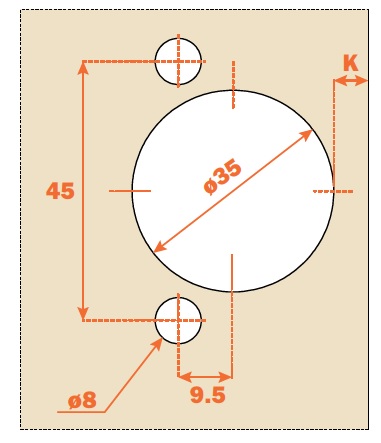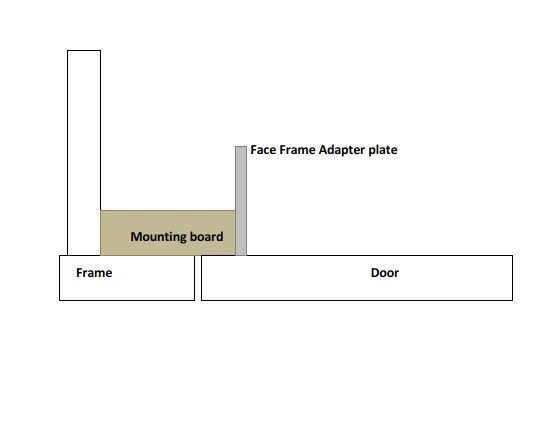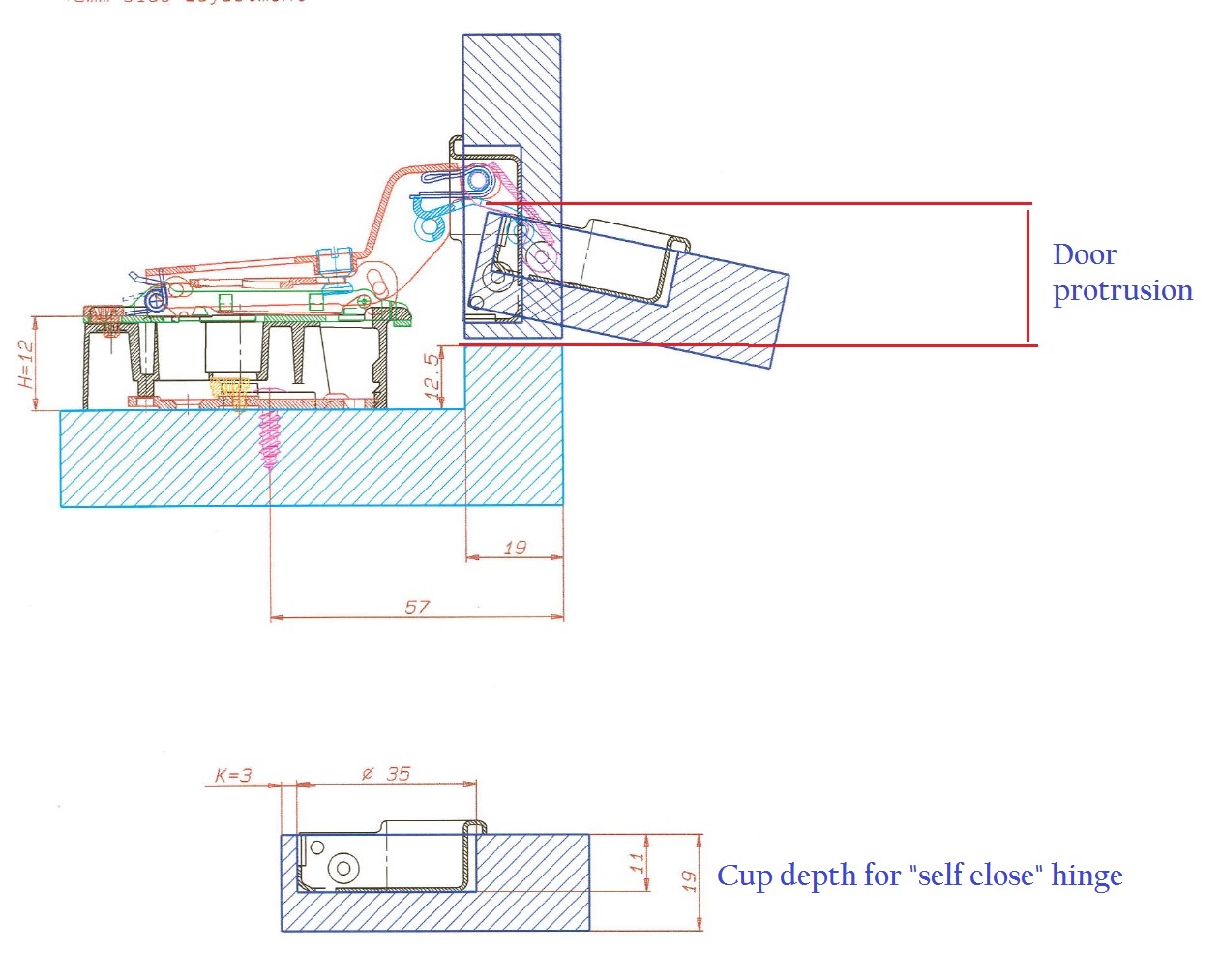What hinges & slides do you use for beaded Faceframes with inset doors & DF's
(Concealed hinges & undermount slides , soft close)
And to complicate things just a bit, about half of my doors will require zero protrusion hinges to permit operation of the multitude of pull-out features
Every rep I've consulted has suggested "blocking out". 1/2 overlays -which I'll only consider as a last resort
Anyone have any suggestions?
From contributor De
Jay,
There are basically 4 approaches that you can take regarding the hinges:
1. Build the sides all flush with the edge of the face frame
2. Block out the sides flush with the face frames at the hinge locations
3. Use a hinge and mounting plate where the mounting plate fastens to the back side of the face frame
4. Use the Salice program of mounting plates fastened to the side of the cabinet (see attachment).
#4 -This system offers an array of mounting plate thicknesses to correspond to the inside face frame dimension. Each of these plates are fully cam adjustable in all directions. The hinge used can be either soft close or self close.
Regarding the under mount drawer slides, any brand will work in an inset application. Some perform better than others due to the adjustability of the slide. The Salice Futura under-mount slide features six-way independent adjustment located in the front locking clip. It is very effective.
If you think about it, zero protrusion is actually impossible with inset doors. The door will naturally protrude into the opening by at least the thickness of the door when doing inset doors.
There are a couple of good, adjustable pilasters on the market to mount your roll-out shelves. One is made by TennTex (plastic) and the other by Century Products (wood). You should be able to find both at your local distributor.Salice_For_Inset_Doors_Face_Frame_Cabinets.jpg">
From contributor Jo
Dennis,
That is interesting, I wasn't aware Salice offerred so many plate thicknesses. I have been using Blum hinges but have been frustrated that they don't offer a wider range of plate thickness. What is the difference in boring sizes for salice hinges from Blum?
From contributor De
John,
The hinge boring pattern is the same; 45mm X 9.5mm. The Salice soft close Silentia hinge also has a shallow cup depth of only 12mm.
From contributor Ma
I have used a mounting board that fastens to the back side of the face frame,and use a standard face frame adapter plate.If my hinge/plate combo was for 1/2" overlay,then the mounting board would stick past the face frame approximately 9/16",so when I mounted the door,I would have about a 1/16" margin,and adjust from there.I have tried all the methods,except Salice's new system,and I think it worked the best for me.
From contributor De
Max,
Is this what you mean by a mounting board? Interesting method. I'm curious though. Wouldn't you need to place the mounting board about 1/16" back from the frame so the door falls in line flus with the face frame?
From contributor Ma
Dennis,
That is what i'm describing. I make my face frames 13/16" thick, and doors 3/4" thick.You could also shim or rabbet the mounting bd. if you preferred. to kick the door back flush with the frame.
From contributor Jo
Max,
Do you make your shelves shallower to fit behind the mounting board or notch them?
Dennis,
Am I correct in what you're saying that the salice hinge fits the same boring size and pattern as the Blum? They also offer soft close similar to the blumotion?
From contributor De
That's right, John. Salice and Blum are the same boring pattern. We also offer the Silentia soft close hinge in both the Euro style and the compact style for face frame cabinets. These are very similar to the Blumotion hinges that you mention.
If you would like a complete Salice catalog just email me your address and we will send one right out to you. If you would like samples, just give me a little information about your typical application and we will include some with the catalog.
Wherever you are I am sure there is a Salice distributor servicing your area.
Regards,
Dennis Bean
Salice America
From contributor De
Here is a drawing showing the inevitable door protrusion when constructing inset doors in a face frame cabinet.
From contributor Ad
The another option is to make the hinge side bulkheads 1mm less than the face frame. So effectively they are always flush and require no blocking or other stuff. It takes a bit more thought and planning at the design stage, but the end product looks way better. You do lose a bit of space here and there; however, its not good space if there are hinges and blocking in the way.
After years of hybrid construction involving FF and euro hardware, I started thinking about the FF as thick edge banding.